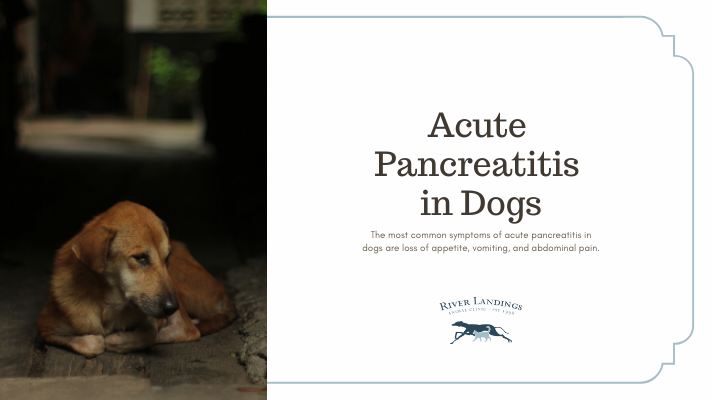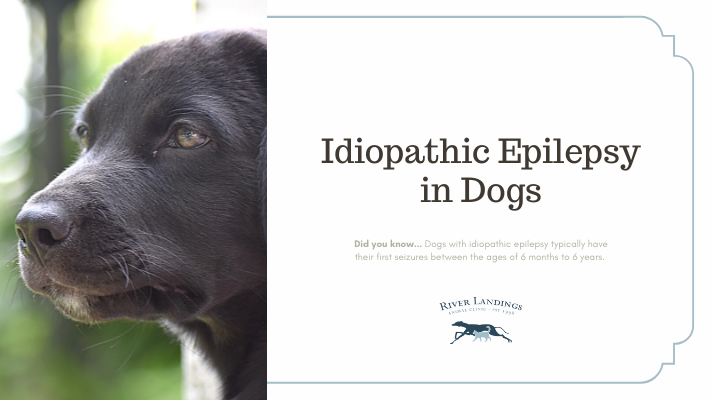Acute Pancreatitis in Dogs
The pancreas has many functions, including the production and secretion of digestive enzymes and the production of insulin. Digestive enzymes are critical for food digestion, while insulin aids in the control of the metabolism and blood-sugar levels. Pancreatitis means “inflammation” of the pancreas and acute means “sudden.” When the pancreas becomes inflamed, digestive enzymes that are normally inactive until they reach the small intestine become active in the pancreas instead—resulting in pain and swelling as the pancreas actually begins to digest itself.
Risks of Acute Pancreatitis in Dogs
There are many suggested causes of acute pancreatitis including: obesity, high-fat diets, endocrine diseases such as hypothyroidism, and various medications or toxins. Even if your dog doesn’t normally eat a high-fat diet, the introduction of a large amount of fatty food all at once can cause acute pancreatitis. Veterinarians see an increase in pancreatitis around the holidays, since many people think a nice way to celebrate is to share their holiday meals with their dog. In addition, dogs that get into garbage are much more likely to develop pancreatitis, so be sure to keep your trash out of your dog’s reach! Pancreatitis can occur in any dog, but some breeds are more susceptible to this disease. They include the miniature schnauzer, miniature poodle, and cocker spaniel. Additionally, pancreatitis is more common in middle-age to older dogs, overweight dogs, and females.
Symptoms of Acute Pancreatitis in Dogs
The most common symptoms of acute pancreatitis in dogs are loss of appetite, vomiting, and abdominal pain. Other symptoms you may notice include:
Swollen abdomen
Abnormal posture; arching of the back
Diarrhea
Lethargy
Restlessness
Gagging
Diagnosis/Treatment
Your veterinarian will take a complete history and perform a thorough physical exam. Additionally, diagnostic tests will be required to identify if your dog has acute pancreatitis. These may include:
Chemistry tests to evaluate kidney, liver, and pancreatic disease or dysfunction, as well as blood sugar levels
A complete blood count to screen your pet for infection, inflammation, or anemia and other blood-related conditions
Electrolyte tests to ensure your dog is neither dehydrated nor suffering from an electrolyte imbalance
Pancreas-specific tests to help diagnose or rule out the disease
Imagaing studies to evalutate the pancreas and other abdominal organs
The treatment of pancreatitis depends on the severity of the disease and may include:
Hospitalization at the veterinary clinic and in more severe cases 24 hour intensive care and monitoring
Intravenous fluids
Pain medicine
Antivomiting medication (antiemetics)
Antibiotics, if a secondary bacterial infection is suspected
Nutritional support
Other medications, depending on your dog’s symptoms
Keep in mind that your veterinarian may recommend that some diagnostic tests, such as the CBC, chemistry tests, and pancreatic-specific tests be repeated to monitor your dog’s progress during treatment.
Your veterinarian will recommend a treatment plan that is specific for your pet. Make sure you give all medications as directed and carefully follow any dietary recommendations. Following recovery a low fat diet may be recommended to decrease the chance of recurrence. Keep a close eye on your best friend; if he or she becomes lethargic or stops eating, call your veterinarian right away.
Prevention of Acute Pancreatitis in Dogs
While you can’t completely prevent acute pancreatitis, the following will help reduce the risk of your dog developing the disease and ensure his health and well-being:
Don’t let your dog become overweight—weight management is just as important for our four-legged friends as it is for us!
Avoid high-fat diets.
Avoid giving your dog table scraps, especially if he isn’t accustomed to eating people food.
Make sure you discuss all medications your dog is receiving with your veterinarian.
Don’t let your dog have access to garbage
If you suspect your pet is overweight or potentially suffering from pancreatitis, please call your vet.
Hear From Us Again
Don't forget to subscribe to our email newsletter for more recipes, articles, and clinic updates delivered straight to your e-mail inbox.
Related Categories:



